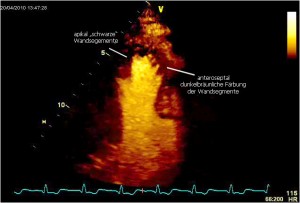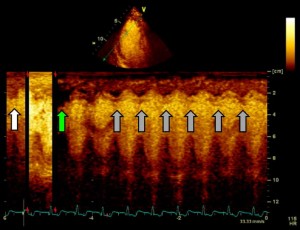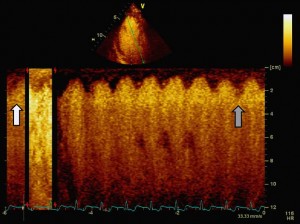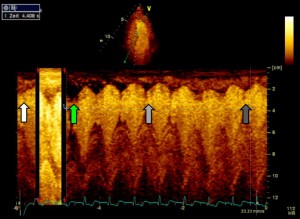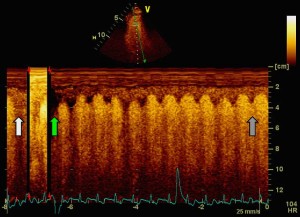This video shows a severe apical perfusion defect during a stress echo with adenosine. A high degree stenosis of the left descending artery (LAD) was verified:
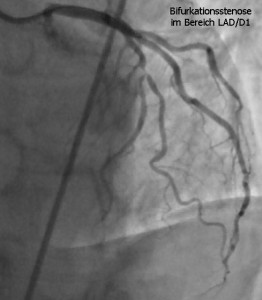 |
The angiogram reveals the expected high degree stenosis of the LAD and the first diagonal branch. |

